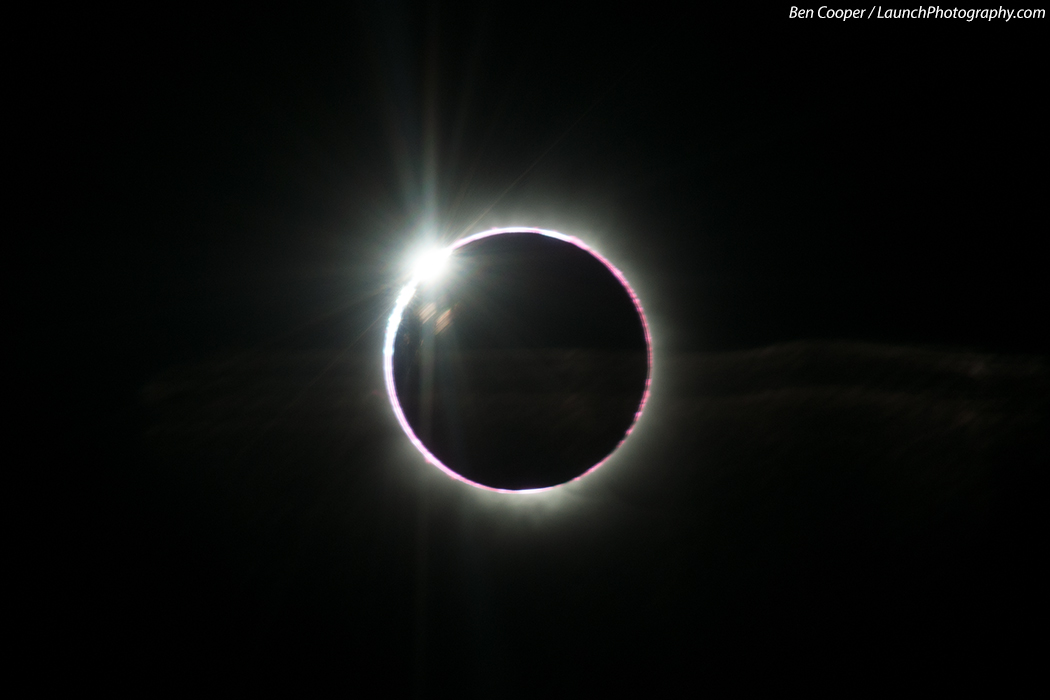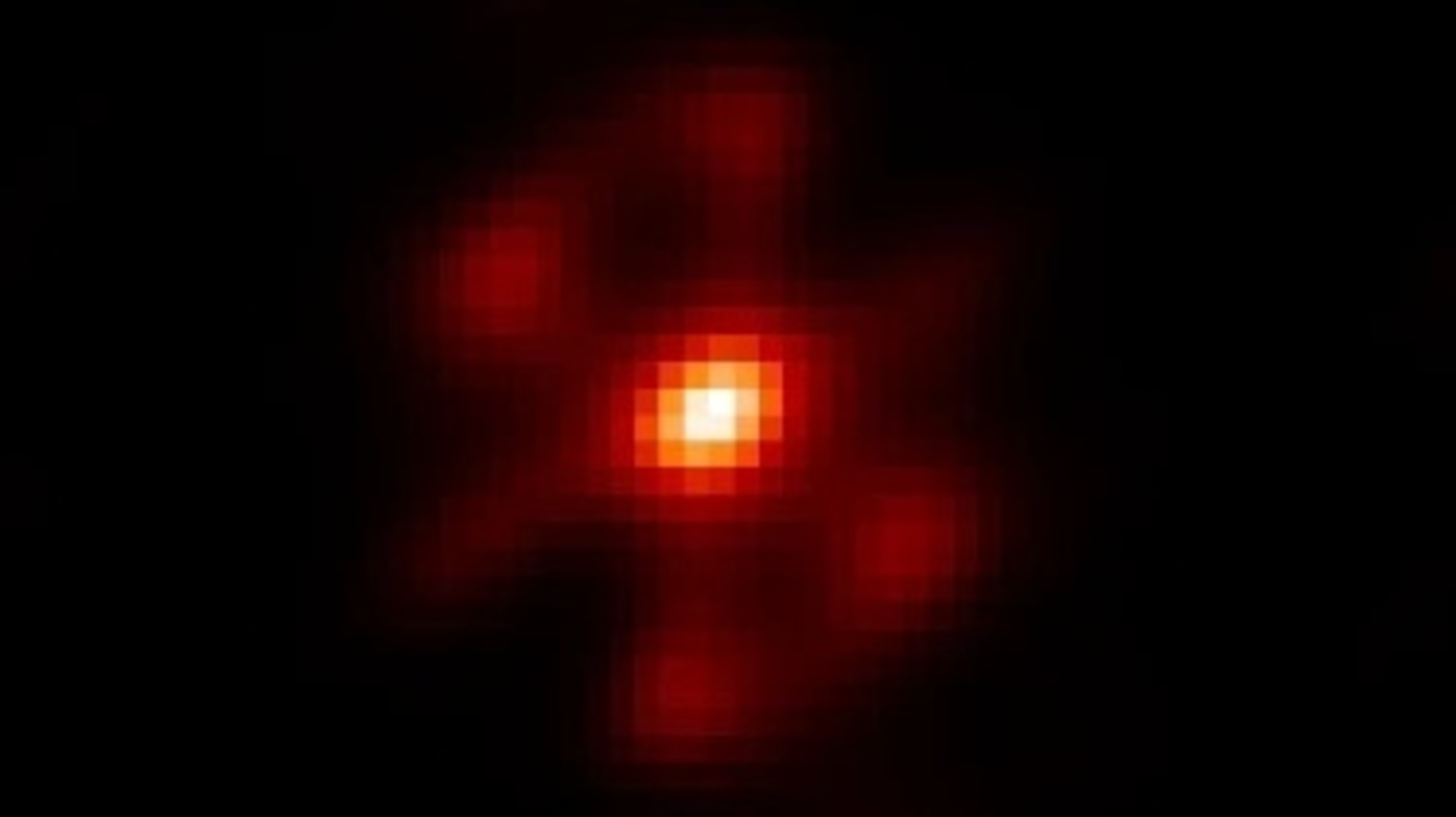Total Solar Eclipses: How Often Do They Occur (and Why)?

It is a popular misconception that the phenomenon of a total eclipse of the sun is a rare occurrence. Quite the contrary. Approximately once every 18 months (on average) a total solar eclipse is visible from some place on the Earth’s surface. That's two totalities for every three years.
But how often is a total solar eclipse visible from a specific location on Earth? That's another story altogether.
Solar eclipse's shadowy details
On the average, the length of the moon's shadow at new moon is 232,100 miles (373,530 km), and the moon's distance to the Earth's surface is, on average, 234,900 miles (378,030 km). This means that when the moon passes directly in front of the sun, it the lunar disk will appear slightly smaller than the disk of the sun, and skywatchers will witness what's known as an annular eclipse, with a dazzling ring of sunlight still visible around the moon's silhouette.
Of course total solar eclipses do occur, because the new moon’s distance can vary between 217,730 miles (350,400 km) and 247,930 miles (399,000 km) from the Earth’s surface, on account of the moon’s elliptical orbit.
So now, let's return to our original question: How often a total eclipse can be seen from a specific point on the Earth's surface?
The science of prediction
Breaking space news, the latest updates on rocket launches, skywatching events and more!
Predicting the details of a solar eclipse requires not only a fairly good idea of the motions of the sun and moon, but also an accurate distance to the moon and accurate geographical coordinates. Rough determinations of eclipse circumstances became possible after the work of Claudius Ptolemy (around A.D.150), and diagrams of the eclipsed sun have been found in medieval manuscripts and in the first books printed about astronomy.
Since the distance to the moon varies, the width of the path of totality differs from one eclipse to another. This width will change even during a single eclipse, because different parts of the Earth lie at different distances from the moon and also because of geometrical effects as the shadow falls at an oblique angle onto the Earth's surface.
In calculating a solar eclipse, one of the first steps is to determine the shadow's relation to the "fundamental plane," which passes through the Earth's center and is perpendicular to the moon-sun line. The path of the axis of the shadow across this plane is virtually a straight line. It is from this special geometry, that the intersection of the moon's dark shadow cone with the rotating spheroid of our Earth must be worked out, using lengthy procedures in trigonometry. To say the least, these factors can make the calculations quite involved (although today's high-speed PCs can effortlessly crunch the numbers, making the task much easier).
In their classical textbook "Astronomy" (Boston, 1926), authors H.N. Russell, R.S. Dugan and J.Q. Stewart noted that:
"Since the track of a solar eclipse is a very narrow path over the earth's surface, averaging only 60 or 70 miles in width, we find that in the long run a total eclipse happens at any given station only once in about 360 years."
More recently, Jean Meeus of Belgium, whose special interest is spherical and mathematical astronomy, recalculated this figure statistically on an HP-85 microcomputer and found that the mean frequency for a total eclipse of the sun for any given point on the Earth's surface is once in 375 years. A value that is very close to the figure that Russell, Dugan and Stewart arrived at.
Related: Amazing Solar Eclipse Photos
Without retracing these computations, there is perhaps another way to check the validity of these answers. In the table below, is a listing of 25 cities. Twenty-three are in North America, plus two others: Honolulu, on the Hawaiian Island of Oahu, and Hamilton, the capital of Bermuda. Using two computer programs designed to scan through the centuries for eclipses, I first searched for the date of the most recent total solar eclipse that was visible from each city, then searched for the date when the next total eclipse for that city would take place.
But it should first be stressed that the nearly four-century wait is merely a statistical average. Indeed, over a much shorter span of time, the paths of different eclipses can sometimes crisscross over a specific place, so in some cases the wait might not be so long at all. In fact, a 40-mile stretch of the Atlantic coast of Angola, just north of Lobito, experienced a total solar eclipse on June 21, 2001, and was treated to another on Dec. 4, 2002, after less than 18 months!
On the other hand, as Meeus recently discovered, some spots on the Earth's surface may not see a total solar eclipse for 36 centuries (" … though this must be exceedingly rare," he notes).
On our list of 25 selected cities, how close would we come to the computed mean-frequency of nearly 400-years between total eclipses?
Here is the list:
A single asterisk (*) denotes that either the northern or southern limit of the moon's umbral shadow only grazes a specific city; only part of that metropolitan area will see a total eclipse while the other part sees a partial eclipse. A double asterisk (**) indicates a date when the now-defunct Julian calendar was in effect.
The average number of years between eclipses turned out to be nearly 534 years. Considering our relatively small survey of 25 cities, this is reasonably close to the once-in-almost four-century rule.
A botched opportunity
All of us who enjoy solar eclipses should be indebted to those astronomers who pioneered doing these extensive calculations; otherwise we would not know exactly where to position ourselves for the big event. Prussian astronomer Friedrich Bessel introduced a group of mathematical formulas in 1824 (now called "Besselian Elements") that greatly simplified the calculation of the position of the sun, moon and Earth.
Related: The World's 1st Televised Solar Eclipse
It is too bad that Bessel's procedures were not available in the late 18th century, when Samuel Williams, a professor at Harvard, led an expedition to Penobscot Bay, Maine, to observe the total solar eclipse of Oct. 27, 1780. As it turned out, this eclipse took place during the Revolutionary War and Penobscot Bay lay behind enemy lines. Fortunately, the British granted the expedition safe passage, citing the interest of science above political differences.
And yet in the end, it was all for naught.
Williams apparently made a fatal error in his computations (or used a poor map) and inadvertently positioned his men at Islesboro — outside the path of totality — likely finding this out with a heavy heart when the waning crescent of sunlight slid completely around the dark edge of the moon and started thickening!
WARNING: Never look directly at the sun during an eclipse with a telescope or your unaided eye; severe eye damage can result. (Scientists use special filters to safely view the sun.)
Editor's Note: If you snap an amazing picture of the July 2, 2019 total solar eclipse, you can send photos, comments, and your name and location to managing editor Tariq Malik at spacephotos@space.com.
Joe Rao serves as an instructor and guest lecturer at New York's Hayden Planetarium. He writes about astronomy for Natural History magazine, the Farmer's Almanac and other publications, and he is also an on-camera meteorologist for News 12 Westchester, N.Y. Follow us @Spacedotcom, Facebook and Google+. Original article on Space.com.

Joe Rao is Space.com's skywatching columnist, as well as a veteran meteorologist and eclipse chaser who also serves as an instructor and guest lecturer at New York's Hayden Planetarium. He writes about astronomy for Natural History magazine, Sky & Telescope and other publications. Joe is an 8-time Emmy-nominated meteorologist who served the Putnam Valley region of New York for over 21 years. You can find him on Twitter and YouTube tracking lunar and solar eclipses, meteor showers and more. To find out Joe's latest project, visit him on Twitter.


